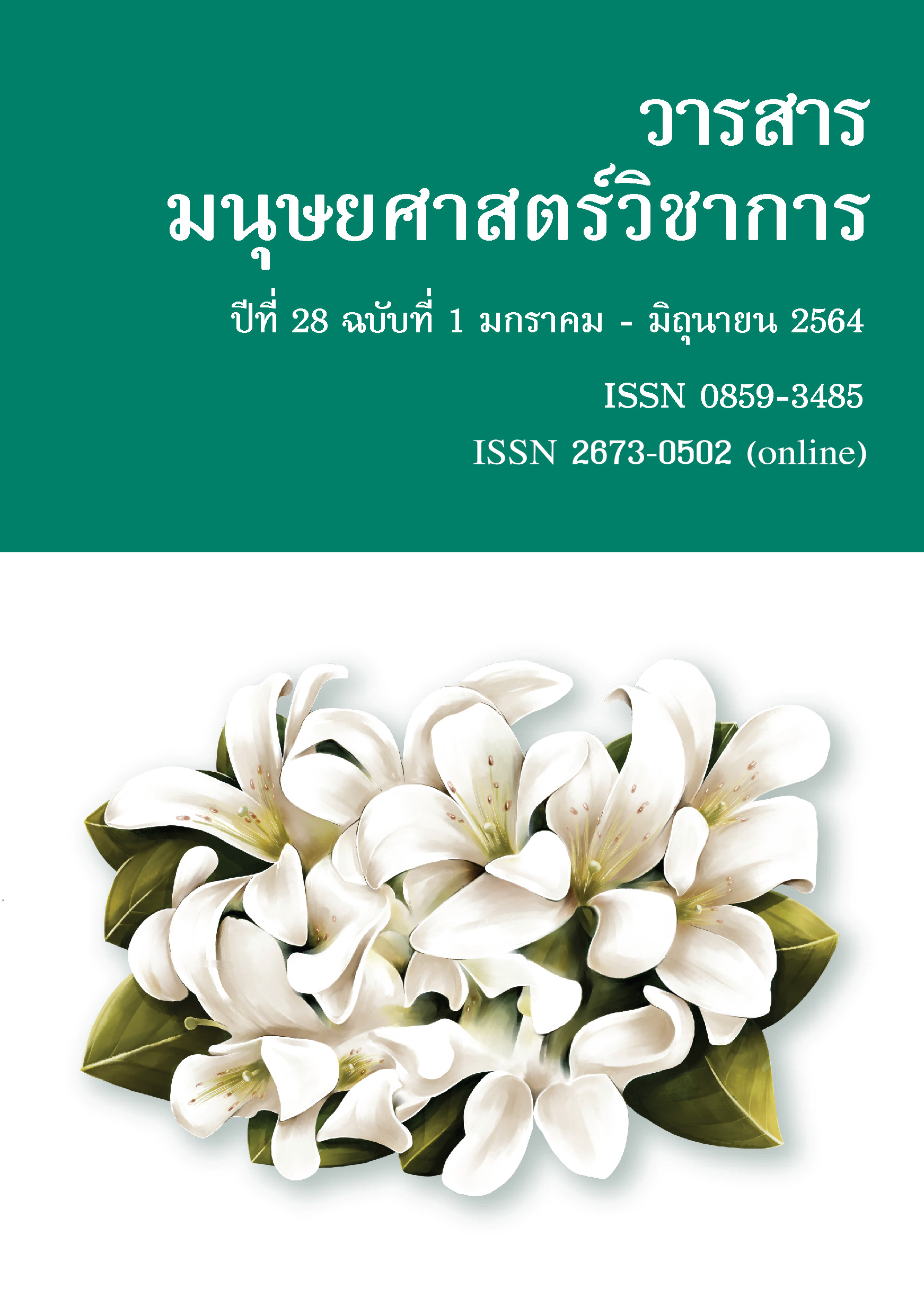The Implicit Ideology in National Council for Peace and Order’s Songs
Main Article Content
Abstract
Due to the political conflicts that had occurred in Thai politics for many years, the Royal Thai Armed Forces launched a coup d’état in May 2014. The Thai military then established the National Council for Peace and Order (NCPO), which governed Thailand until July 2019. Beginning in May 2014, the NCPO released eight songs, which were from the soundtracks of the TV show, called ‘Thailand Moves Forward’. Thais who watched TV regularly would definitely have heard at least one of the songs. which were wri tten and arranged by the NCPO. This study aims to explore an implicit ideology in all eight National Council for Peace and Order’s songs and to analyze linguistic strategies used to convey the ideology in the song lyrics by ad opting the
critical discourse analysis approach. The result showed that the ideology hidden in the songs is the insecurity of the country. There is a war in Thailand, and Thailand is not a safe place. People having three different roles were found in the analysis. The first role was the role of the Thai government as a hero who had the power to save the country and to sacrifice themselves for the Thai people. Next, the role of the Thai people and the country is that of victims who face obstacles and need to have someone to help them. The last role is that of the villains: the people who do not accept the assertion that the government has worked hard to save the country. After analyzing these song lyrics, it was found that there are six linguistic strategies used to convey
the implicit ideology. They are the uses of lexical choice, transitivity, modality, speech act, presupposition and metaphor.
Article Details
References
Adams, T. M. and Fuller, D. B. (2006). The words have changed but the ideology remains the same: Misogynistic lyrics in rap music. Journal of Black Studies, 36(2), 938-957.
Aleshinskaya, E. (2013). Key components of musical discourse analysis. Research in Language, 11(4), 423-444.
Arbain and Sandi, M. T. A. (2016). Critical discourse analysis of Eminem’s ‘Love the Way You Lie Part II’. Script Journal, 1(1), 1-10.
Bayram, F. (2010). Ideology and political discourse: A critical discourse analysis of Erdogan’s political speech. ARECLS, 7, 23-40.
Bradby, B. (2003). Part I social and cultural dimensions: 2. Popular music studies: Discourse analysis. Continuum Encyclopedia of Popular Music of the World, 1.
Fairclough, N. (1989). Language and power. London, England: Longman.
Fairclough, N. (1995). Critical discourse analysis: The critical study of language. London, England: Longman.
Martinez Jr, B. A. and Selepak, A. (2013). Power and violence in Angry Aryan song lyrics: skinhead communication strategy to recruit and shape a collective identity in the White Power Movement. C&S - São Bernardo do Campo, 35(1), 153-180.
Prayut 5 Years 8 Songs (รวมเพลงลุงตู่ สร้างสรรค์ผ่านปลายปากกา 5 ปี 8 บทเพลง). 2019, March 4. The S tandard. retrieved from http://thestandard.co/prayut-5-years-8-songs/.
Risdianto, F. (2016). Discourse analysis of a song lyric entitled ‘We Will Not Go Down’. Register Journal, 9(1), 139-158.
Van Dijk, T. A. (1993). Principles of critical discourse analysis. Discourse and Society, 4(2), 249-283.
Van Dijk, T. A. (1997). Discourse as interaction in Society. In T. A. Van Dijk (Ed.), Discourse as Social Interaction: Discourse Studies a Multidisciplinary Introduction (Vol. 2). London: Sage Publications.
Van Dijk, T. A. (2003). Critical discourse analysis. In D. S. e. al. (Ed.), The Handbook of Discourse Analysis (pp. 352-371). Malden, MA: Blackwell.
Van Dijk, T. A. (2006). Ideology and discourse analysis. Journal of Political Idelogies, 11(2), 115-140.


